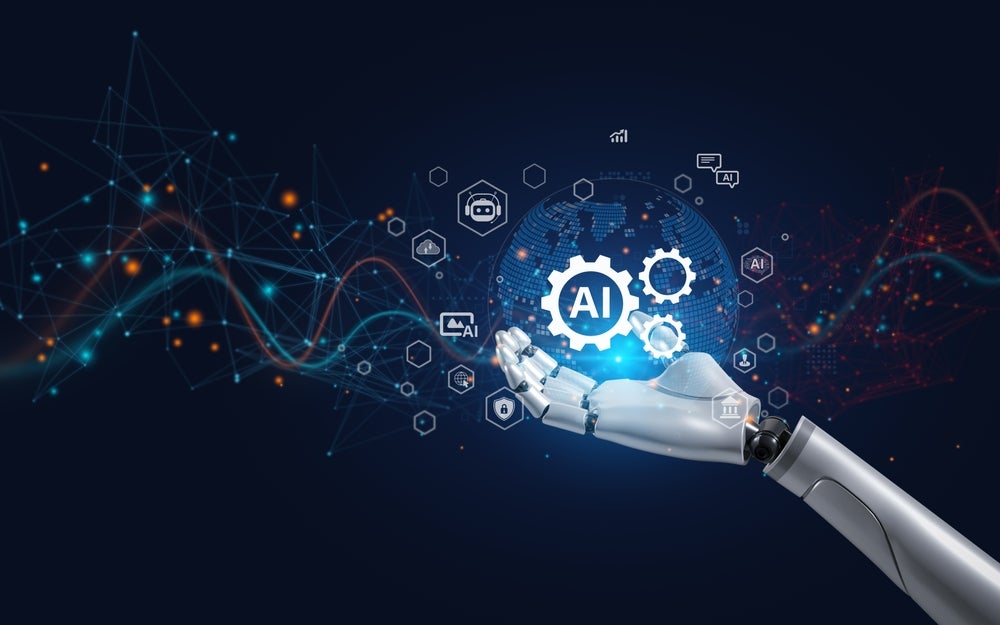
Generative AI is hyped to disrupt entire industries and GlobalData estimates that the total AI market will be worth $908.7bn in 2023, growing at a compound annual growth rate (CAGR) of 35% from 2022–30.
For the life sciences industry, this means a major shakeup in the workforce and how organisations are structured. Research from consulting firm Accenture suggests that GenAI may affect roughly 50% of life sciences work hours, and half the time currently spent in work activities at a biopharma company will be either automated or augmented.
As organisations shift to accommodate new tools, life science leaders are paying close attention to the areas that the technology can create the highest value.
In an exclusive interview with Medical Device Network, Kenneth Munie, managing director of Accenture Strategy’s life sciences practice, delves into the impact of GenAI. This interview has been edited for length and clarity.
Catherine Longworth: Can you explain what generative AI is?
Kenneth Munie: Generative AI is a type of artificial intelligence technology that uses machine learning to create content such as text, images, audio, video, design, or software code. It’s not the explanative, descriptive, or predictive AI that we would call classic AI technology – it’s a type of AI that creates things that didn’t exist before.
CL: What are the use cases for generative AI in life sciences?
KM: It could be something as simple as creating marketing texts or advertising copy from large language models, or it could be something as specific as designing new molecules with generative AI.
For example, Absci achieved a breakthrough approval with its generative AI drug creation and other companies are using the technology for drug discovery. We also see other uses of generative AI to design different modifications to proteins or different protein mutations.
For physicians, generative AI can be used to engage with doctors and patients through conversational AI and the technology can be used to create synthetic data. So, if there’s a rare disease, generative AI can create data based upon patients’ information anonymously. This reduces issues surrounding patient privacy or confidentiality. So, there are many different examples where AI can be used to generate things.
CL: Where across the value chain do you see the technology delivering the most value?
KM: Quite simply, it can deliver value across all parts of the value chain. From product design and development, to manufacturing, commercialisation, supply chain, support, as well as enabling functions such as finance, procurement, legal HR, IT etc.
The basis of Accenture’s research into GenAI was because the technology is new to all industries but has much broader applicability than prior forms of AI. In the past, if you had a task or a question that you needed AI to work on, that was handed over to a group within an organisation that specialised in AI, and they would do their analysis and come back with answers.
Now, we’re seeing the application of GenAI apply to almost everybody in the organisation. The analysis that we did was how will it impact individuals. What’s the application of generative AI or the impact on an individual or roles belonging to different functions?
What we’ve found is that there are two types of impact from generative AI. One is automation, the second is augmentation.
Let’s look at a manufacturing manager – which is a role description that we’ve done analysis for. Generative AI could automate many of the operations within that role. For example, there could be a generative AI agent that summarises information for the marketing manager, and we see that could take up a potential of 30% of the tasks that a marketing manager does in a life sciences company.
The augmentation element could be to look at the usefulness of new products or new technologies in manufacturing, and so generative AI could look at what products and technologies are out there based upon the most recent data, summarise the characteristics of them and their applicability to the specific situation of the marketing manager.
Augmentation is not just about speeding up the task. It’s also about providing more insight or useful insight for the marketing manager to do their job. We see GenAI as impacting around 18.6% of a marketing manager’s role, so overall when you look at it, almost half of that role could be impacted by technology either through automation or augmentation.

CL: What do you see as the limitations of GenAI?
KM: The interesting part is that I don’t believe the limitation is driven by the technology. The limitation is driven by the organisation of talent. For example, if 50% of a marketing manager’s job is impacted by generative AI, what happens next?
If suddenly, 30% of their tasks disappear, what do they fill their time with? The key is the impact must be thought of from an organisational perspective, and it’s a redesign of how that role is established.
You either add more to that role or you reduce the number of roles that you have at that level. Many organisations will need to redesign functions or create new ones. Potentially they could wind up with two different levels of managers – one that oversees all the insight and augmentation, and perhaps a more junior role that oversees all the automation.
The challenge though, is understanding how productivity will impact these roles and creating new or optimised functions. These roles will change to a significant degree, and that’s where we see clients struggling. They get the technology and understand the use case but very few are thinking about how work is reshaped and how that translates into different functions.
CL: How are companies approaching implementation of generative AI within their organisations?
KM: We’ve done surveys of some of our largest clients, and I would say around 20% are taking a ‘wait and see’ approach and this is across all industries. About half or 50% are doing experimentation – so understanding the impact through application and use cases/proofs of concept. Finally, about 30% are taking a top-down C-suite driven approach looking at how to reshape their organisations and reshape distinctive capabilities. It’s a minority of organisations that are thinking this way but if they do it right, these are the companies that gain the most from the technology.
We believe that there is a lot of potential with GenAI but the challenge is getting that impact to turn into financial results. It is not necessarily the tech which will be the hurdle, but the ways of working and how people are organised.
CL: Where is the life sciences world at with adoption of GenAI compared to other industries?
KM: The challenge is always that life sciences is more regulated than other industries, so the implementation of new technologies is generally slower. Of the industries that we cover, we are seeing industrial manufacturers and automotive, large capital-intensive industries, taking the leadership in generative AI for product design and manufacturing applications.
CL: How are workforces currently adapting to the use of these tools?
KM: There have been some studies from Stanford, MIT, and others that have shown that a lot of it is very use-case dependent, but a lot of the early gains or productivity gains have been shown to come from lower experienced workers, meaning taking the lower performers and moving them to average performance and then some smaller boosts to the experienced workers. Overall, this could have implications on company’s talent sourcing strategy and career pathways.
A lot of medical technology clients are at the point where they’re seeing the experience that they have within the organisation ready to retire so it creates an interesting dynamic where these tools might accelerate the growth of new talent within organisations.
Discover more about generative AI from GlobalData webinar: Lead with Generative AI: Empower Your Business with New-Age Industry Solutions.



